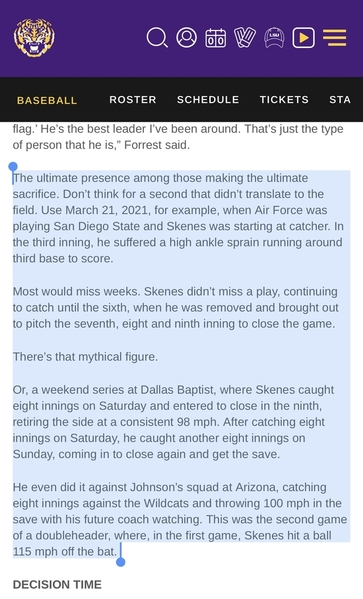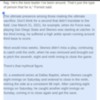The Washington Post is obsessing on this issue, and I assume they have received a lot of blowback from their previous articles. Here's their most recent one, by Jesse Dougherty:
https://www.washingtonpost.com...seball-pitch-counts/
Highlights:
...Dan Latham, Stetson University pitching coach: “All pitches aren’t really created equal. Seventy-five high-pressure pitches where you have a 30-pitch inning, traffic on the bases, every pitch is kind of a do-or-die, is different than throwing 100 grooving pitches, everything is easy, up-down, fast half innings, on and off. I just find the fatigue is different for those things, and the breaking point and where they hit that level of fatigue that turns into injury is just going to differ game to game.”...
...More than anything, MLB pitchers are hooked before high counts because it’s not statistically sound to have them face a lineup a third or fourth time. In the evolution of the sport, greater concerns about arm injuries have coincided with a data revolution that’s flipped the conventional thought on starter usage....“MLB teams have decided it’s not smart to push and push pitchers for a lot of reasons,” Brewster said. “Is part of that to mitigate injury risk? I’d imagine so, yeah. But no one at that level is shy about not wanting their pitchers to see hitters three or four times in a game. Popular strategy can almost appear like risk-averse medical practice.”....
....With a pitcher’s UCL — the elbow ligament repaired by Tommy John surgery — injury risk rises with pitch counts because the UCL starts to bear even more stress than it should. Brewster explained that, at the beginning of an outing, the muscles around the UCL are fresh and able to offload the stress created by torquing the arm and elbow over and over. But as those muscles tire, the UCL absorbs more of the strain, heightening the possibility of immediate injury or cumulative damage. This makes recovery and preparation that much more important. Mathews, for example, had thrown at least 100 pitches in 15 of his 17 starts this season, building him up for a big workload in June (though not for 156 pitches, a lot of people might credibly argue). Skenes has topped 100 pitches in 11 of 17 starts and thrown at least 110 in five. .....


